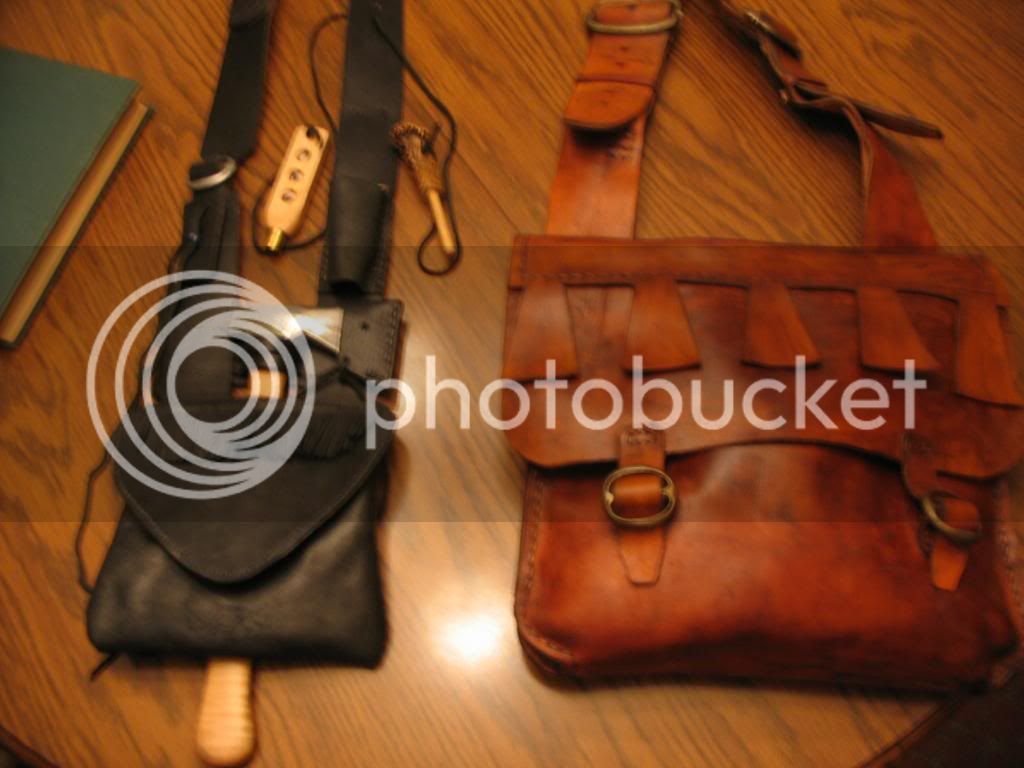IMHO, the pattern at the link is a little complicated. A real basic hunting pouch can be made with only one piece of leather for the body and flap, folded in roughly thirds, sewn inside out,like Dodgecitie's. Add a half to three quarters of an inch to the dimensions of the body of the bag as a seam allowance, though only about a quarter on an inch will be used for the seam. The excess will taken up when the bag is turned right side out.
The only seams on the basic bag are those on either side of the bag, and the ones attaching the strap to the bag.
IMHO, the use of rings to suspend the bag from the straps is too complicated...and at the risk of being called a nazi, not really historically correct.
It is easier and much less complicated to sew the straps to the back of the bag, near the top.
I also suggest laying out the items you carry for a days shooting, or several days of hunting or trekking, to arrange those items on the back of the bag for sewing small pouches for each item.
I carry these items in open top pouches sewn especially for them. A small 7/8" X 1 3/4" bottle of liquid lube/ bore cleaner, a tin of grease lube/ bore preservative, a tin of patches, adjustable powder measure, and clasp knife. A small, flat, open top pocket is sewn on the front of the bag that contains a forged turnscrew, and another open top pocket large enough to contain a dozen balls and spare flints for use on woodswalks or when small game hunting, where shooting can be fast.
The pouches for the powder measure and clasp knife are long and narrow, and sewn down the length, and just inside the side seams.
The pouch for each item keeps those I frequently use in one location so I know where they are. Separate small pouches allows me to reach those items quickly, without looking.
Balls are more commonly carried in a leather bag inside the hunting pouch, as is a flint wallet, gun cleaning utensils that are necessary but not often used, and a spare mainspring and springcramp.
In my experience, laying out a hunting pouch takes longer than sewing it together. Sew the inside pouches and "extras" on the front and back of the body before the back and front of the pouch are sewn together, inside out.
If you are like me, you will make several hunting pouches before you get one that satisfies your needs. The recommendations I made work well for me. They may not work for you, so experiment with how and where each item is secured and located.
Making hunting pouches can be complicated and time consuming, but it doesn't have to be. And it isn't rocket science. I couldn't sew a single stitch when I began shooting these old guns. I now make all of my clothing and leather gear, as well as many other items I would have never thought of making on my own.
I'm just a short, fat, foureyed, baldheaded old man with no appreciable talent, and if I can make a good hunting pouch, anyone can.
God Bless,
J.D.






